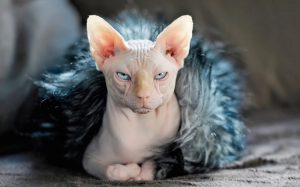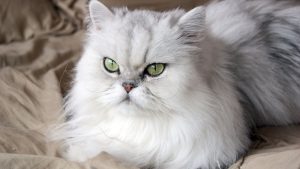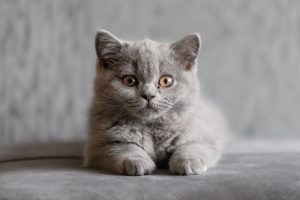The Ragdoll cat is a medium-to-large-sized breed with a soft coat and distinctive blue eyes. They are known for their sweet, friendly nature and their tendency to go completely limp when held—just like a ragdoll, which is where their name comes from. In this article, let’s join KnowAllAnimals to learn more about the origin, characteristics, care, and price of the Ragdoll cat.
Ragdoll Cat Breed at a Glance
- Origin: California, USA
- Weight: Up to 9 kg (20 lbs)
- Length: Up to 101.6 cm (40 inches)
- Temperament: Sociable, friendly, easygoing
- Coat: Long, with colors including chocolate, red, blue, lilac, and cream
- Eyes: Distinctive blue
- Lifespan: Up to 17 years
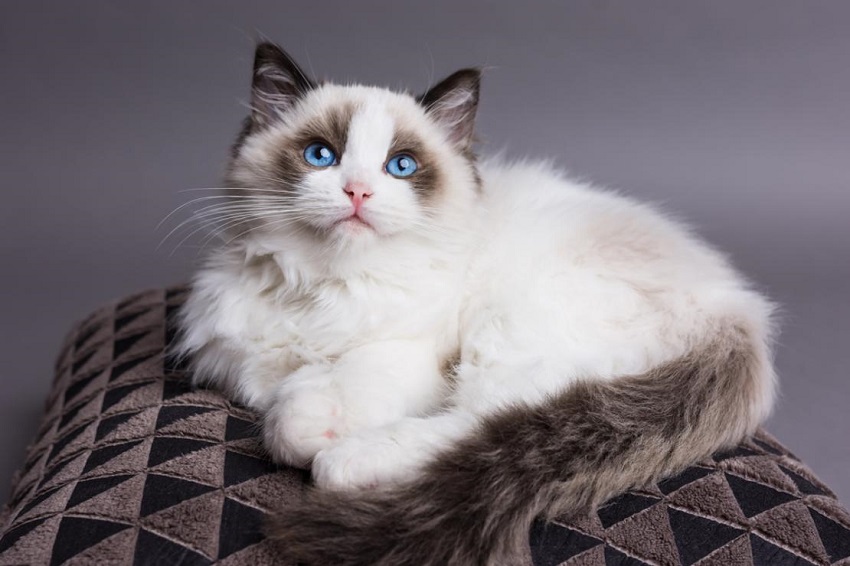
1. Origin and History of the Ragdoll Cat Breed
1.1. 1960s: Ann Baker and Josephine
Ann Baker, a cat breeder in California, began to develop the Ragdoll cat breed. She borrowed a white female cat named Josephine from a neighbor, who had a soft coat similar to an Angora cat. Josephine had a special temperament: she would go limp when held and enjoyed following people around.
1.2. 1965-1966: The First-Generation Breeding Process
According to the Original Ragdoll Society (VdOR), the Ragdoll cat breed was developed from three main foundational cats through Ann Baker’s breeding efforts:
- Josephine (female, white): The first mother and founder of the “White Line.” Josephine carried the pointed gene and is an ancestor of all modern Ragdoll cats.
- Blackie (female, Burmese): The ancestor of the “Dark Line” with a Mink color. She was bred with Josephine’s descendants to develop darker colors. Blackie carried the point variation gene, which helped create darker colors for the Ragdoll line.
- Beauty (male, Birman): He was bred with the descendants of Josephine and Blackie to diversify the patterns and colors of the Ragdoll breed. Beauty contributed to creating patterns like Mitted (white paws) and Bicolor.
The breeding of these three ancestors was the foundation for developing the Ragdoll cat breed. The breeding process focused on maintaining genetic traits such as the colorpoint coat, the softness of the fur, and a gentle, friendly temperament. The original Ragdoll lines were not crossbred with other breeds, and only came in colors like Seal, Blue, Chocolate, and Lilac, with Mitted, Bicolor, or other patterns.
1.3. Four Notable Foundational Cats of the Ragdoll Breed
Josephine gave birth to several notable kittens, including the male cat Daddy Warbucks. Ann Baker bred Daddy Warbucks with Josephine to produce Raggeddy Ann Fugianna, and with the cat Buckwheat to produce Kyoto and Tiki.
1.4. 1966: Official Registration of the Ragdoll Breed
On December 30, 1966, Ann Baker registered Josephine, Daddy Warbucks, Raggeddy Ann Fugianna, and Buckwheat with the National Cat Fanciers’ Association.
1.5. 1969: Denny and Laura Dayton Join the Breed’s Development
- Breeding from 1969: Ann Baker sold the first pair of Ragdolls to Denny and Laura Dayton. They carefully selected and bred cats to meet breed standards.
- International Promotion: They introduced Ragdolls to cat shows, helping the breed gain widespread recognition.
- International Recognition: They worked with international organizations to get the breed recognized: TICA in 1979 and CFA in 1993.
- Establishing Breed Standards: They helped define characteristics such as blue eyes, a silky coat, and a friendly temperament.
- Preserving Traditional Colors: They maintained the traditional Seal, Blue, Chocolate, and Lilac colors, helping to protect the purebred line.
- Significant Contributions: Their efforts were crucial in making the Ragdoll one of the most popular and beloved cat breeds globally.
1.6. 1971: Establishment of the International Ragdoll Cat Association (IRCA)
Ann Baker founded the IRCA to control the breeding of Ragdolls and to register the breed’s intellectual property rights.
1.7. 1981-1986: Ragdolls Arrive in Europe
In 1981, Ragdolls were introduced to England, and by 1986, the breed was introduced in France. From Josephine and the first generations of cats, Ann Baker created the Ragdoll breed with its charming appearance and special temperament. Today, the Ragdoll remains one of the most beloved companion cat breeds in the world, with a stable future thanks to its strong genetic foundation.
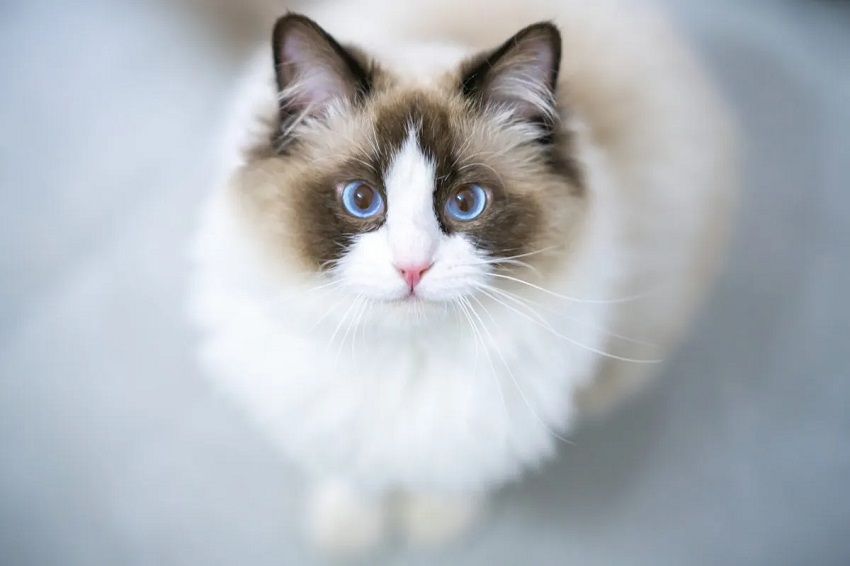
2. Physical Characteristics of the Ragdoll Cat
The Ragdoll has a long coat, a large body, and a pale overall appearance, with darker colors concentrated on their face, ears, legs, and tail—known as a colorpoint pattern. This is the result of a combination of genes from different cat breeds, mainly due to a recessive gene from Siamese cats.
Size and Body: Ragdolls stand out for their large size and long, well-proportioned body. They are one of the biggest cat breeds, with well-defined muscles while still maintaining a graceful demeanor.
Coat: A prominent feature of the Ragdoll is their thick, soft, and medium-length coat. Their fur is very silky, especially noticeable around their neck where the hair is thicker, creating a small “ruff” like a lion’s mane.
Colors and Patterns:
Colors: Ragdolls come in a variety of colors, with the most common being:
- Red
- Blue
- Chocolate
- Lilac
- Cream
Coat Patterns: The patterns on a Ragdoll’s coat include:
- Colorpoint: Color is concentrated on the face, ears, legs, and tail, creating a contrast with the rest of the body.
- Bicolor: Features a white inverted “V” shape on the face, along with a white belly and legs.
- Mitted: Distinguished by characteristic white “mittens” on their paws and a white chin.
- Van: The majority of the body is white, with color concentrated only on the face and tail.
- Eyes: An unmistakable feature of the Ragdoll is their bright blue eyes, which always give them a charming and striking appearance. All purebred Ragdoll cats have this eye color.
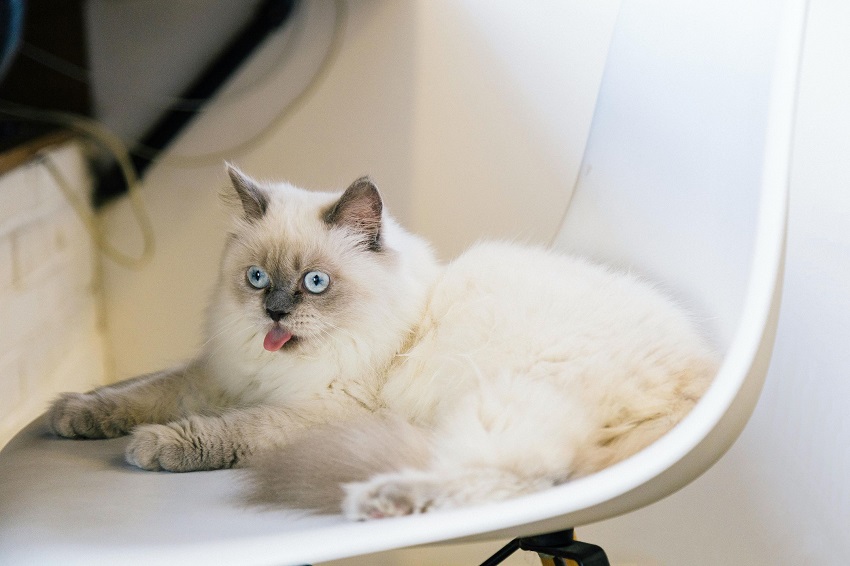
3. Ragdoll Cat Temperament
- Friendly and Approachable: Ragdolls are known for their gentle, easygoing, and very friendly nature. They love being around people and enjoy bonding with their owners. This makes them an excellent choice for families with small children or multiple pets.
- Loves to Cuddle: Ragdolls enjoy being petted and cuddled. They often lie next to their owners, sometimes at their feet, waiting for attention. Their affectionate and communicative nature makes them a reliable companion.
- Low-Energy: Unlike many other active cat breeds, Ragdolls are quite lazy and prefer to rest. They often seek out warm, comfortable spots in the house to relax and don’t have a high need for extensive exercise. This makes them easy to adapt to an indoor lifestyle and they don’t require a large space for physical activity.
Ragdoll cats are not only known for their beautiful appearance but also for their charming, gentle, and very approachable personality, making them one of the most beloved cat breeds for anyone seeking a calm and affectionate companion.
4. How to Raise and Care for a Ragdoll Cat
4.1. Exercise and Physical Activity
Exercise Time and Activities: Ragdolls are not an overly active breed, but they still need exercise to prevent obesity. You should spend about 15-20 minutes daily playing with your cat, using a laser pointer, a cat wand, or other interactive toys.
Kittens under 6 months old: For kittens, engage them in light, frequent, and short activities to help with physical development. Avoid overly strenuous or dangerous games when they’re young.
4.2. Grooming and Hygiene
Brushing: Despite having a long coat, Ragdolls only need to be brushed 2-3 times per week. This helps remove loose hair and prevents matting, while keeping their coat soft and smooth.
Cleaning Ears and Eyes: Regularly clean your cat’s ears and eyes with a specialized solution to prevent infections. This should be done once a week.
Bathing: Ragdolls don’t need frequent baths; bathing them once every 1-2 months, or when they get particularly dirty, is enough. Use a cat-specific shampoo to protect their coat and skin.
Nail Trimming: You should trim your cat’s nails 1-2 times a month to prevent them from scratching furniture. After trimming, provide your cat with scratching posts for them to use.
4.3. Ragdoll Cat Diet
Commercial Food: Choose high-quality kibble, wet food, or treats from reputable brands like Royal Canin or Whiskas to ensure they get all the necessary nutrients. Wet food can also help your cat maintain hydration and prevent urinary issues.
Homemade Diet: Ragdolls need a diet rich in protein from meat and fish, such as boiled chicken, beef, or salmon. Avoid feeding them too many carbohydrates like rice or corn, as this can lead to obesity.
Feeding Tips: Divide a kitten’s meals into 3-4 small portions per day, while adult cats should eat 2 meals per day. Avoid leaving food out all day, as this can easily cause obesity. Always provide fresh, clean water 24/7.
Foods to Avoid: Do not feed your cat food with spices, onions, garlic, coffee, or especially chocolate, as these can be extremely harmful to their health.
4.4. Training and Education
Obedience Training: Ragdolls are easy to train due to their gentle and intelligent nature. Use small treats to reward them when they follow commands correctly.
Socialization: Help your cat get used to their new environment, children, or other pets from an early age to prevent fear or stress.
4.5. Health and Common Ailments
Obesity: Ragdolls are prone to obesity because they are less active. Controlling their food intake and ensuring regular exercise is the best way to maintain their physique and health.
Hypertrophic Cardiomyopathy (HCM): This is a common heart condition in this breed that causes the heart muscle to thicken. HCM has no definitive cure, so regular vet check-ups are essential for early detection.
Urinary Tract Infections and Bladder Stones: Encourage your cat to drink plenty of water and provide them with wet food to prevent urinary tract issues. If you notice your cat crying in pain or having difficulty urinating, take them to the vet immediately.
Vaccinations and Deworming: Ensure your Ragdoll is vaccinated and dewormed on a regular schedule to prevent infectious diseases and parasites.
4.6. Interaction with Children and Other Pets
Ragdolls are very friendly and suitable for families with small children or other pets. They are gentle, approachable, and rarely cause problems when living with other animals.
The Ragdoll is an easy breed to raise and care for, with a gentle temperament and beautiful appearance. By providing a proper diet, good hygiene, and regular exercise, you will help your Ragdoll stay healthy and happy, making them a wonderful companion for your family.
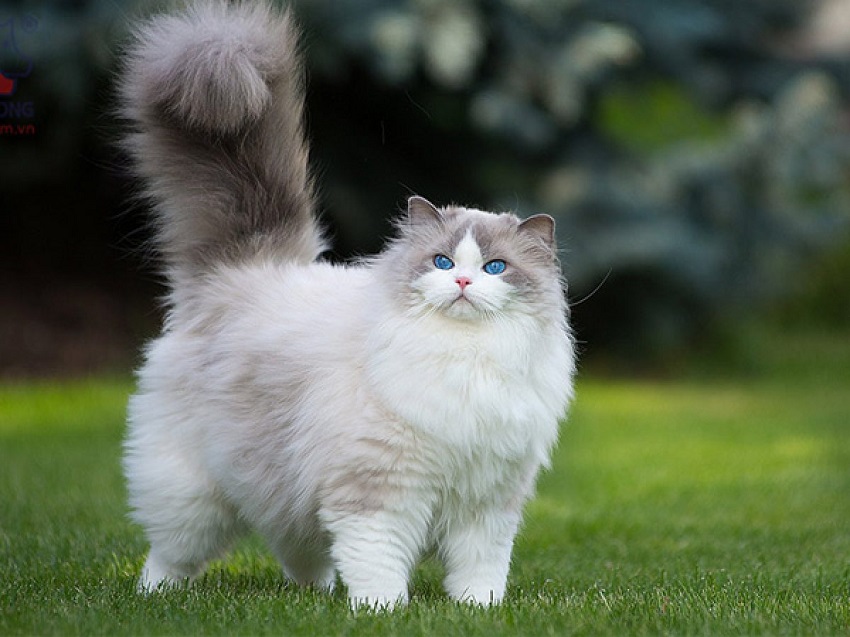
5. Ragdoll Cat Pricing and Factors Affecting the Cost
The price of a Ragdoll cat depends on many factors, such as appearance, origin, paperwork, and the breeder’s reputation. Investing in a purebred Ragdoll with official papers from a reputable breeder will ensure you own a healthy cat that meets breed standards. It’s best to avoid buying cheap Ragdolls with unclear origins to prevent potential health risks and other undesirable problems.
5.1. Factors Affecting Ragdoll Prices
A Ragdoll’s price is influenced by several different factors, including:
Appearance: Ragdolls with a beautiful appearance, a smooth coat, balanced coloring, and plump paws often cost more. Distinctive features like floppy ears or short legs can also increase a cat’s value.
Origin: Purebred Ragdolls with papers from international organizations like TICA (The International Cat Association) or WCF (World Cat Federation) will have a higher price than cats without papers. Additionally, Ragdolls imported from other countries, especially from Europe, are often more expensive than cats bred locally.
Color and Pattern: Ragdolls with unique or rare colors and patterns like lilac, chocolate, or bicolor and colorpoint patterns will cost more than those with common colors.
Age and Gender: Kittens are usually more expensive than adult cats, with the exception of breeding cats. Female cats are often more expensive than males due to their breeding potential, which increases their value for breeders.
Warranty and Delivery: Some sellers offer a health warranty, insurance, or post-purchase support, which also adds to the cat’s value.
Breeder Reputation: Buying a cat from a reputable breeder, high-quality cattery, or well-known pet store will guarantee the cat’s health and purity, but the price will typically be higher.
5.2. Reference Price List for Ragdoll Kittens
Here is a reference price list for Ragdoll kittens:
- Ragdolls without papers start from $380.
- Ragdolls with TICA or WCF papers start from $760.
- Ragdolls imported from Europe start from $3,810.
6. FAQs
1. Are Ragdoll cats good for first-time owners?
Yes, Ragdolls are an excellent choice for beginners. They are calm, affectionate, and easygoing, making them one of the most beginner-friendly cat breeds.
2. Do Ragdoll cats shed a lot?
Ragdolls have semi-long fur, but they don’t shed excessively. Regular brushing helps minimize shedding and keeps their coat smooth and tangle-free.
3. Are Ragdoll cats vocal?
Ragdolls are generally quiet cats. While they may “talk” occasionally, they are not as vocal as some other breeds like Siamese cats.
The Ragdoll is a perfect choice for anyone looking for a gentle, affectionate cat. Whether you buy from a reputable breeder or adopt from a rescue shelter, make sure your cat receives good care for a healthy and happy life.
References: https://en-m-wikipedia-org.translate.goog/wiki/Ragdoll?_x_tr_sl=en&_x_tr_tl=vi&_x_tr_hl=vi&_x_tr_pto=wa

